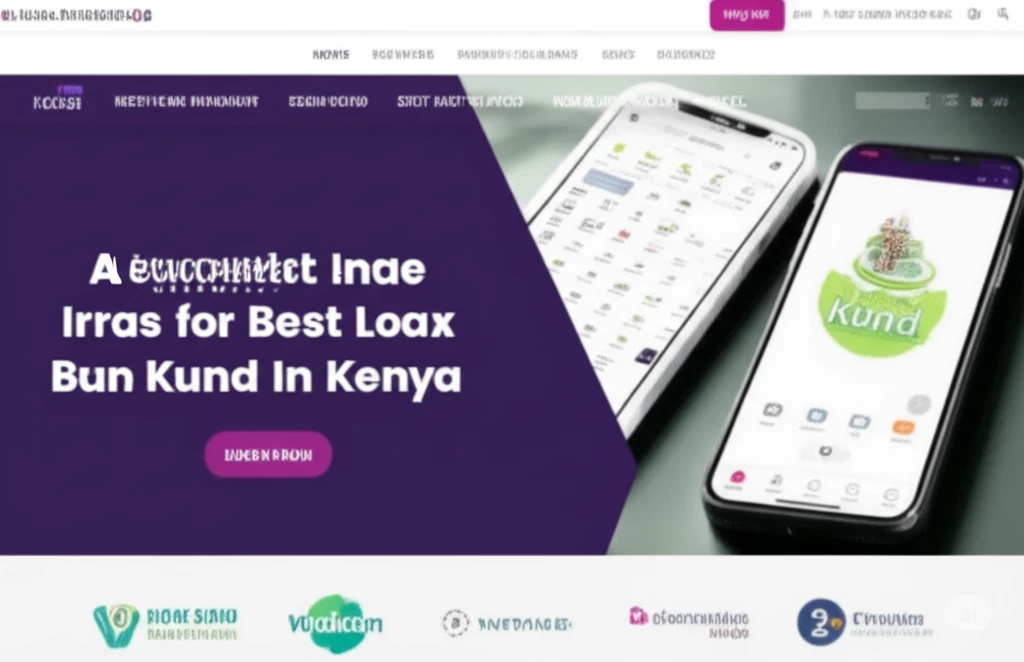Best Loan Applications In Kenya
In recent years, mobile loan applications have revolutionised the financial landscape in Kenya. These digital lending platforms offer fast, convenient, and accessible credit to millions of Kenyans, especially those underserved by traditional banking systems. As smartphone penetration continues to rise, loan apps have become the go-to solution for quick financial relief. This article explores the best loan apps in Kenya, comparing their features, interest rates, eligibility requirements, and pros and cons to help you make an informed choice.
1. Why Loan Apps Are Popular in Kenya
Kenya’s mobile-first economy has fostered the growth of digital financial services. With the widespread adoption of M-Pesa and increased mobile internet access, many citizens prefer mobile-based solutions to traditional brick-and-mortar banking. Loan apps provide:
- Instant access to credit without the need for collateral.
- Convenient repayment through mobile wallets like M-Pesa or Airtel Money.
- Minimal paperwork and quick approval processes.
- Automated credit scoring based on phone usage, transactions, and behavior.
This accessibility makes them particularly attractive to small business owners, students, and low-income earners.
2. Top Loan Apps in Kenya (2024–2025)
2.1 Tala
Overview: Tala is one of Kenya’s most recognised loan apps with millions of downloads. It offers fast, flexible loans to users with little or no credit history.
- Loan range: KSh 500 – KSh 30,000
- Interest rate: 7% – 19% depending on repayment history
- Repayment period: 21 to 30 days
- Requirements: Android phone, active M-Pesa account, national ID
Pros: Fast disbursement, no collateral, rewards for good repayment.
Cons: High-interest rates for new users.
2.2 Branch
Overview: Branch leverages AI and smartphone data to assess creditworthiness. It’s available in multiple countries and offers higher loan limits for consistent users.
- Loan range: KSh 250 – KSh 70,000
- Interest rate: 15% – 33%
- Repayment period: 4 to 68 weeks
- Requirements: Android phone, Facebook or phone verification
Pros: Higher limits over time, longer repayment terms.
Cons: Steep interest for short-term loans.
2.3 Zenka
Overview: Zenka offers short-term loans with a unique advantage—your first loan can be interest-free.
- Loan range: KSh 500 – KSh 30,000
- Interest rate: 9% – 30%
- Repayment period: 61 days to 1 year
- Requirements: Valid ID, phone number, M-Pesa account
Pros: First loan free, fast approval, multiple repayment options.
Cons: Higher interest after the first loan.
2.4 M-Shwari
Overview: Integrated into the M-Pesa platform, M-Shwari is a collaboration between Safaricom and NCBA Bank. It offers both loans and savings options.
- Loan range: KSh 100 – KSh 50,000
- Interest rate: 7.5% one-time fee
- Repayment period: 30 days
- Requirements: M-Pesa and Safaricom SIM card
Pros: Seamless integration with M-Pesa, instant credit.
Cons: Short repayment period and lower limits for new users.
2.5 Fuliza
Overview: Fuliza is not a traditional loan app but an overdraft facility by Safaricom. It lets users complete M-Pesa transactions when they have insufficient funds.
- Loan range: Depends on usage behavior
- Daily fee: KSh 2 – KSh 30 depending on amount used
- Repayment: Automatic on next M-Pesa top-up
Pros: Instant access, easy use, no app installation.
Cons: High cost for long-term borrowing.
2.6 Okash
Overview: Okash is owned by Opera Software. It offers small, short-term loans via its dedicated Android app.
- Loan range: KSh 2,500 – KSh 50,000
- Interest rate: Up to 36% APR
- Repayment period: 14 – 30 days
Pros: Simple application process, responsive customer service.
Cons: Aggressive debt collection methods reported.
3. Factors to Consider Before Using Loan Apps
When choosing a mobile loan app, consider the following:
- Interest Rates: Understand if the rates are flat, reducing, or compound.
- Repayment Terms: Shorter periods may lead to penalties if you delay.
- Credit Reporting: Some apps report to CRBs; late payment could affect your credit score.
- Hidden Fees: Always read the terms and conditions for processing or late fees.
- Privacy: Some apps collect phone contacts and usage data—evaluate their privacy policy.
4. Regulatory Landscape in Kenya
In 2022, the Central Bank of Kenya (CBK) started regulating Digital Credit Providers (DCPS). This was due to consumer complaints about data breaches, harassment, and predatory lending practices. Registered apps now require licenses, must disclose terms transparently, and operate under consumer protection laws.
To stay safe, ensure the app you use is approved by the CBK. A full list of registered providers is available on their official website.
5. Loan Apps vs Traditional Banks
Loan apps offer unparalleled convenience, but how do they compare to banks?
| Feature | Loan Apps | Traditional Banks |
|---|---|---|
| Speed | Instant | 1–7 days |
| Collateral | None | Often required |
| Loan Amount | Low to Medium | Medium to High |
| Regulation | Improving | Strictly regulated |
6. Tips for Responsible Borrowing
- Only borrow what you can repay comfortably within the term.
- Avoid taking loans from multiple apps simultaneously.
- Track repayment dates and set reminders to avoid penalties.
- Use loans for productive purposes—like business or emergencies—not consumption.
- Monitor your CRB status and avoid defaulting.
Conclusion
Loan apps have become an integral part of financial inclusion in Kenya, offering critical support to those locked out of formal banking systems. Whether you are a small trader, student, or employee, the flexibility and speed offered by these apps can be a lifesaver. However, users must be vigilant, responsible, and informed when borrowing.
By understanding each app's features, risks, and costs, you can make smart financial decisions that support your goals rather than jeopardise your future. Choose wisely and borrow responsibly.



Comments